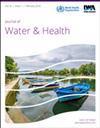Hospital waste incinerator ash: characteristics, treatment techniques, and applications (A review)
IF 2.5
4区 环境科学与生态学
Q3 ENVIRONMENTAL SCIENCES
引用次数: 0
Abstract
Abstract The amount of medical waste generated has increased enormously since the COVID-19 outbreak. An incineration process is the main method that is usually used to treat this waste, causing an increase in both medical waste bottom ash (MWBA) and medical waste fly ash (MWFA). In this work, the physical and chemical characteristics of MWFA and MWBA were reviewed. This ash contains high levels of polychlorinated dibenzo-p-dioxin (PCDD), dibenzofurans (PCDFs), and heavy metals. Furthermore, medical waste ash appears to have high leachability in the toxicity characteristics leaching procedure (TCLP) test and the European standard test (EN 12457). Owing to its toxicity, medical ash can be treated using various methods prior to disposal based on the covered review. These techniques include chemical, supercritical fluid, cement-based, melting, microwave, and mechanochemical techniques. The shortcomings of some of these treatment methods have been identified, such as the emission of high levels of chlorine from the melting technique, limited applications of the flotation method on the industrial scale, long-term stability of leachate treated by cement-based methods that have not been confirmed yet, and high energy consumption in the supercritical technique. This review also covers possible applications of medical waste ash in cement production, agriculture, and road construction.医院垃圾焚烧炉灰:特性、处理技术及应用(综述)
自新冠肺炎疫情爆发以来,医疗废弃物产生量急剧增加。焚烧法是处理医疗废物的主要方法,导致医疗废物底灰(MWBA)和医疗废物粉煤灰(MWFA)增加。本文综述了MWFA和MWBA的理化特性。这种灰烬含有大量的多氯二苯并对二恶英(PCDD)、二苯并呋喃(pcdf)和重金属。此外,在毒性特性浸出程序(TCLP)试验和欧洲标准试验(EN 12457)中,医疗废物灰似乎具有高浸出性。由于其毒性,根据所涵盖的审查,医用灰在处置前可采用各种方法进行处理。这些技术包括化学技术、超临界流体技术、水泥基技术、熔融技术、微波技术和机械化学技术。其中一些处理方法的缺点已被确定,如熔融技术排放高水平的氯,浮选法在工业规模上的应用有限,水泥基方法处理渗滤液的长期稳定性尚未得到证实,以及超临界技术的高能耗。本文还综述了医疗废灰在水泥生产、农业和道路建设等方面的应用前景。
本文章由计算机程序翻译,如有差异,请以英文原文为准。
求助全文
约1分钟内获得全文
求助全文
来源期刊

Journal of water and health
环境科学-环境科学
CiteScore
3.60
自引率
8.70%
发文量
110
审稿时长
18-36 weeks
期刊介绍:
Journal of Water and Health is a peer-reviewed journal devoted to the dissemination of information on the health implications and control of waterborne microorganisms and chemical substances in the broadest sense for developing and developed countries worldwide. This is to include microbial toxins, chemical quality and the aesthetic qualities of water.
 求助内容:
求助内容: 应助结果提醒方式:
应助结果提醒方式:


